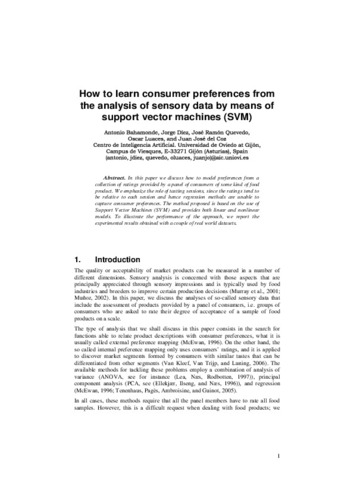How to learn consumer preferences from the analysis of sensory data by means of support vector machines
Fecha de publicación:
Editorial:
Elsevier
Versión del editor:
Citación:
Descripción física:
Resumen:
In this paper we discuss how to model preferences from a collection of ratings provided by a panel of consumers of some kind of food product. We emphasize the role of tasting sessions, since the ratings tend to be relative to each session and hence regression methods are unable to capture consumer preferences. The method proposed is based on the use of Support Vector Machines (SVM) and provides both linear and nonlinear models. To illustrate the performance of the approach, we report the experimental results obtained with a couple of real world datasets
In this paper we discuss how to model preferences from a collection of ratings provided by a panel of consumers of some kind of food product. We emphasize the role of tasting sessions, since the ratings tend to be relative to each session and hence regression methods are unable to capture consumer preferences. The method proposed is based on the use of Support Vector Machines (SVM) and provides both linear and nonlinear models. To illustrate the performance of the approach, we report the experimental results obtained with a couple of real world datasets
ISSN:
Colecciones
- Artículos [37548]
- Informática [875]
Ficheros en el ítem




